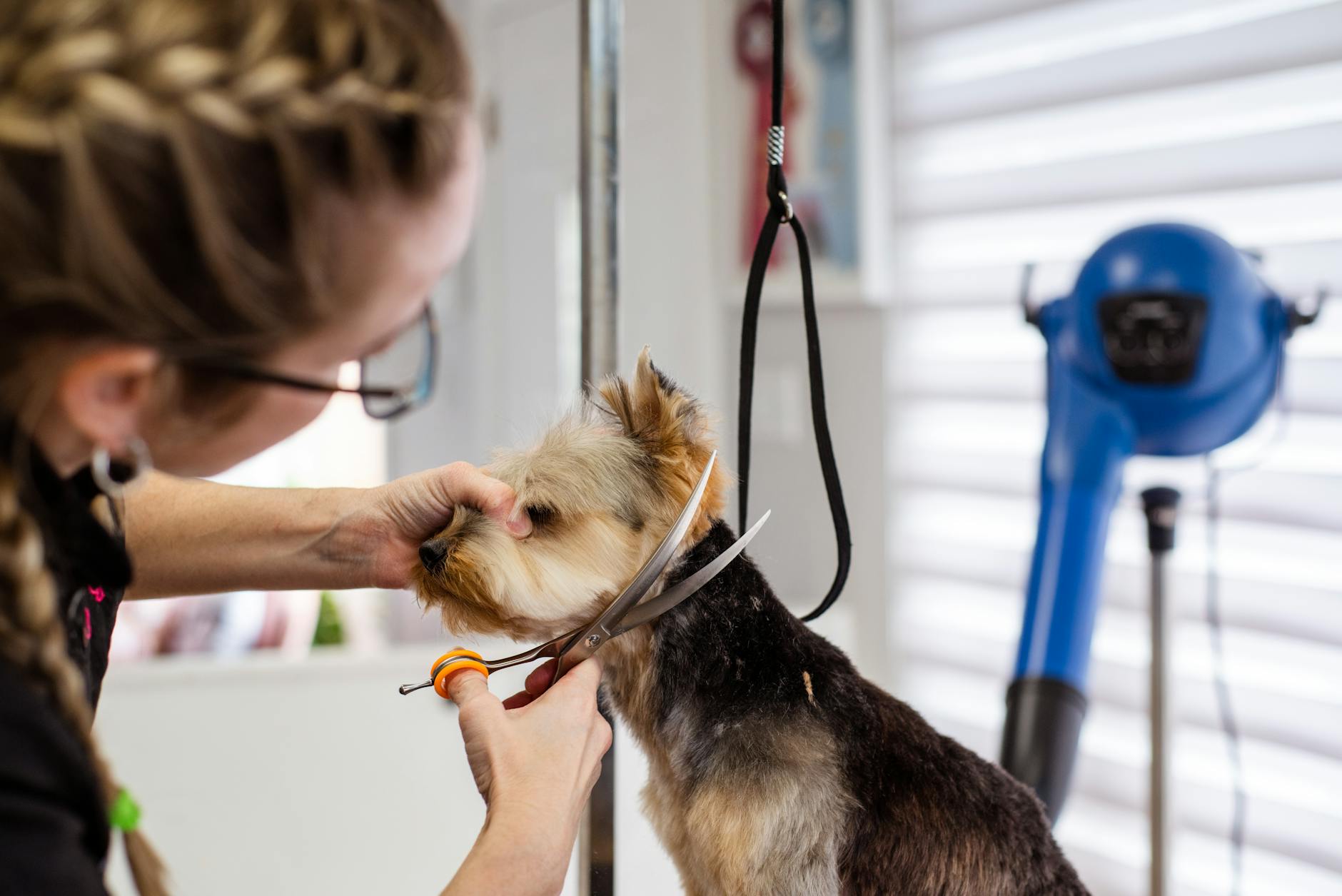Why Humane Dog Training Methods Are Gaining Popularity in Australia

Historical Dog Training Practices
Reflecting on the evolution of dog training, it's fascinating to consider how our approach has changed over time. I remember my grandmother sharing stories about their dogs growing up near the Sydney Opera House, where simple commands and verbal cues sufficed for basic obedience. However, traditional methods relied heavily on dominance and control, sometimes using tools that would be considered harsh by today’s standards.
One of the more rudimentary techniques involved using training collars dogs to assert authority. While these tools were seen as essential for teaching obedience, they often lacked a gentle approach, leaving little room for understanding the nuances of canine behavior. Similarly, using an invisible dog fence was among the early solutions for managing pets' boundaries, though it was not embraced by all due to misunderstandings about its safety.
Interestingly, as dog enthusiasts began advocating for animal rights and welfare, the shift towards more humane practices gained momentum. Methods like anti bark collars evolved considerably, focusing more on correcting specific behaviours without distressing the animal. Over the years, this change has been driven by a deeper understanding of dogs' emotional and psychological needs, similar to how we have come to appreciate the interconnected ecosystems at Sydney's Taronga Zoo.
In this journey, each innovation reminds us of the delicate balance between discipline and compassion, continually shaping how we guide our furry companions towards a happy, cooperative life.
Why Training Matters
Enhancing Dog Behavior
When walking past the iconic Taronga Zoo in Sydney, I often think about how essential training is for creating harmony in the animal-human relationship. Just as zookeepers work tirelessly to communicate with their charges, dog training is a vital process for fostering mutual understanding between pets and their owners. Training enhances dog behavior by instilling discipline and reducing anxiety, ultimately allowing for a more peaceful household environment. The key to success is using effective tools like bark collars judiciously. These collars can be particularly helpful for persistent barkers when used alongside behavioral strategies. It's essential to remember that any device should complement training techniques rather than replace them.
Cost-Effective Long Term
While it may seem like an investment upfront, training your dog effectively proves cost-effective in the long run. Addressing behavioral issues early on can prevent more serious or expensive problems, like property damage or legal troubles, later. Utilizing appropriate dog travel accessories can also simplify and reduce travel-related stress, making outings enjoyable for both you and your pet. A well-trained dog is less likely to cause disturbances, which means fewer resources are spent on corrective measures.
Impact on Owner-Dog Relationship
Strengthening the bond between you and your dog requires a commitment to ongoing training and understanding. The use of a shock collar should be carefully considered within the context of a balanced training program. It's about building trust and respect, transforming the daily routine into an opportunity for enrichment rather than conflict. By focusing on humane methods and innovative tools, you foster a long-lasting, positive relationship with your pet.
Core Humane Methods
Positive Reinforcement Techniques
Positive reinforcement is the pillar of humane dog training, and it truly shines when applied consistently. By rewarding desired behaviours, we encourage our furry friends to repeat them, fostering a nurturing environment that helps eliminate unwanted behaviours. As a veterinarian in bustling Melbourne, I've seen pet owners begin this journey filled with hesitancy, only to find remarkable change and strengthened bonds with their dogs.
Behavioral Adjustment Strategies
Understanding your dog's mindset is vital to practicing effective behavioural adjustments. Techniques such as redirecting focus and providing enrichment activities can steer your dog towards more acceptable behaviours, much like guiding a curious tourist around the bustling Sydney Opera House. In my practice, I've often demonstrated these strategies, helping clients effectively address anxiety or aggression, equipping them with tools beyond traditional barking collars.
Skill-Building Exercises
Skill-building exercises offer more than just mental stimulation; they instill confidence and dexterity in your canine companion. Engaging your dog in activities like obstacle courses or agility training can be akin to using gps dog tracking devices to ensure your pet's safety while being active. Whether teaching a retriever to fetch a specific toy or introducing a scent game, these exercises are fundamental in enhancing your dog’s cognitive abilities and ensure a positive training journey.
Humane methods in dog training create a constructive dialog between owners and pets, fostering both mutual respect and understanding. This symbiotic relationship encourages lifelong learning and growth, crucial for a harmonious living environment.
Popularity in Australia
Adaptation by Australian Trainers
Over the years, Australian dog trainers have embraced diverse techniques to improve behavioral outcomes, drawing keen interest in tools like the anti barking collar. This device serves as an impressively effective method when used correctly, curbing excessive barking by emitting a controlled stimulus. My personal journey in exploring dog training technologies started in the heart of Sydney's vibrant cityscape, a process deeply enriched by inputs from fellow trainers who share a passion for humane training.
Influence of Veterinary Community
The veterinary community in Australia, particularly in cities like Melbourne, plays a crucial role in informing responsible dog training practices. Professionals value innovative tools such as the hidden dog fence, which merges safety with freedom for our furry friends. In several discussions with my peers, I've found that recommending such solutions offers an assurance to pet owners eager to give their dogs the liberty to roam without the risk of wandering too far.
Case Studies from Melbourne
Shifting our focus to Melbourne, several successful implementations have been evident among local trainers. For instance, using these modern tools alongside conventional techniques has proven fruitful, shaping well-rounded behavioral modifications in dogs. In one memorable case, collaborating with a client to implement a hidden dog fence dramatically improved their Labrador's learning curve, illustrating the tangible benefits of incorporating progressive technologies into training regimens without compromising the pet's independence.
Common Pitfalls in Dog Training
Misreading Dog Signals
Misinterpreting the subtle cues our dogs give us is like missing the melody in a beautiful opera at the Sydney Opera House. When I first adopted Bella, my spirited Labrador, I often confused her wagging tail for excitement, not realizing it sometimes signaled anxiety. It’s essential to observe and understand each dog's unique language. A slight tilt of the head, a not-so-playful growl, or flattened ears can tell us if our training is hitting the mark or missing it altogether. Recognizing these signals ensures that we’re responding appropriately to our dog’s needs, avoiding unnecessary stress and fostering a healthy bond.
Dependence on Equipment
Relying too heavily on training gear can be a bit like always using a GPS for a stroll through the Royal Botanic Garden Sydney—you miss out on authentic exploration. Many dog owners think tools like choke collars or shock devices provide quick results, but these can harm your furry friend if misused. Instead, focus on consistent behavioural cues and positive reinforcement. Remember, the goal is to build trust and confidence without any short cuts.
Inconsistent Training
Think of training a dog like tending to a garden at Taronga Zoo; consistent care and attention are key. When we first started training Bella, I noticed that skipping sessions or being inconsistent with commands led to confusion and setbacks. Every interaction is an opportunity for reinforcement. Making a commitment to practice regularly, even when life gets a little hectic, will yield a well-behaved, happy pooch that responds positively in various situations.


